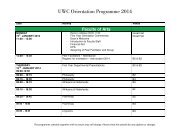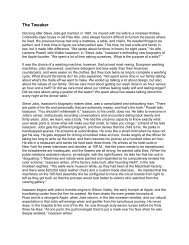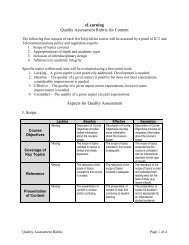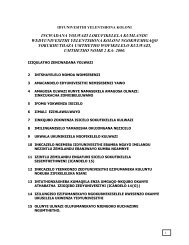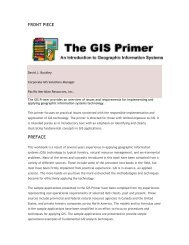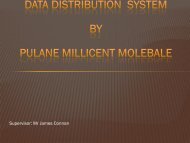Ecosystem Guidelines for Environmental Assessment
Ecosystem Guidelines for Environmental Assessment
Ecosystem Guidelines for Environmental Assessment
You also want an ePaper? Increase the reach of your titles
YUMPU automatically turns print PDFs into web optimized ePapers that Google loves.
FRESHWATER<br />
INCORPORATING MINOR DRAINAGE LINES TO STREAMS AND LARGE<br />
RIVERS, AND EPHEMERAL, SEASONAL AND PERMANENT SYSTEMS<br />
FRESHWATER<br />
ECOSYSTEMS: RIVERS<br />
Liz Day and Nancy Job<br />
What are the key ecological “drivers” in terms of<br />
maintaining ecosystem function, pattern or structure<br />
Water quantity and flow regime - including surface and groundwater sources.<br />
Water quality.<br />
Geomorphological processes (erosion and sedimentation).<br />
Biological processes, affecting biotope quality and availability (e.g. algal abundance).<br />
Upstream/catchment processes.<br />
What are the key challenges affecting management<br />
Maintenance of hydrological regimes and the implementation of effective Instream Flow Requirements<br />
(IFR) <strong>for</strong> river systems. The limitations in terms of accuracy and methodology of the Department<br />
of Water Affairs and Forestry's present Ecological Reserve Determination should be clearly understood<br />
and reflected in a conservative approach to implementation of any particular reserve.<br />
Maintenance of natural or near-natural water quality, and improvement of water quality in degraded<br />
systems.<br />
Maintenance of natural (or sustainable, in an altered environment) erosion and sedimentation<br />
processes.<br />
Maintenance of biological and hydrological linkages throughout the catchment and seasonal or<br />
permanent links with groundwater and wetlands.<br />
Maintenance of specific habitat quality and availability.<br />
Maintenance of genetic integrity (including biodiversity).<br />
Co-ordination of management interventions at a catchment scale so as to maximise the potential <strong>for</strong><br />
achieving and sustaining all of the above objectives.<br />
Integration of ecological and social objectives, so that improvement in one sphere is not at the<br />
expense of the other.<br />
What are the key issues, vulnerabilities and threats<br />
Catchment hardening (loss of wetlands and natural drainage patterns; loss of natural habitat at a<br />
catchment level leading to increased volume and rate of runoff).<br />
Fragmentation/loss of biological corridors and natural connectivity through inter alia diversion and<br />
in-filling of riverine wetlands.<br />
Direct loss of aquatic habitats (including diversion, canalisation and dredging, and loss of associated<br />
floodplains) due to encroachment of developments.<br />
Removal or degradation of indigenous vegetation in the system.<br />
Over-abstraction from:<br />
- surface water<br />
- groundwater<br />
Impoundment.<br />
ANDREW BROWN<br />
74 : FRESHWATER ECOSYSTEMS - RIVERS



